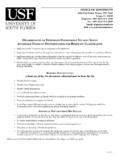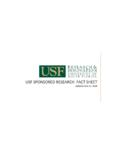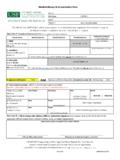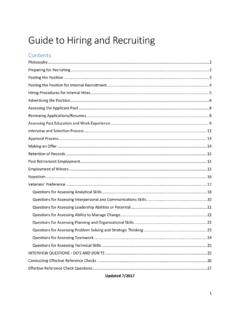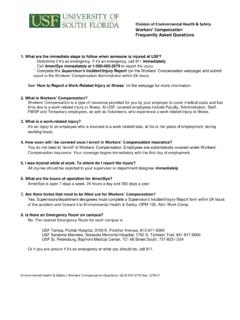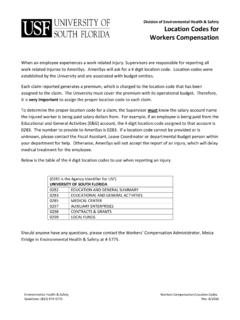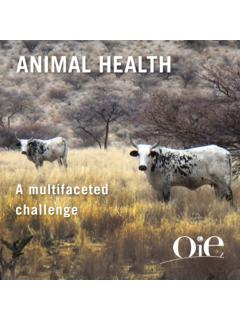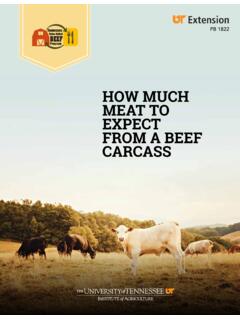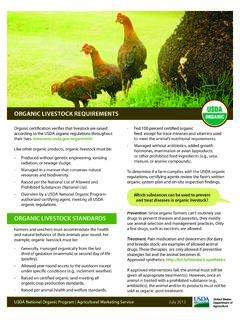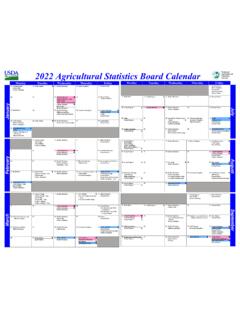Transcription of AVMA Guidelines for the Euthanasia of Animals: 2020 Edition*
1 AVMA Guidelines for the Euthanasia of Animals: 2020 Edition*. Members of the Panel on Euthanasia Steven Leary, DVM, DACLAM (Chair); Fidelis Pharmaceuticals, High Ridge, Missouri Wendy Underwood, DVM (Vice Chair); Indianapolis, Indiana Raymond Anthony, PhD (Ethicist); University of Alaska Anchorage, Anchorage, Alaska Samuel Cartner, DVM, MPH, PhD, DACLAM (Lead, Laboratory Animals Working Group);. University of Alabama at Birmingham, Birmingham, Alabama Temple Grandin, PhD (Lead, Physical Methods Working Group); Colorado State University, Fort Collins, Colorado Cheryl Greenacre, DVM, DABVP (Lead, Avian Working Group); University of Tennessee, Knoxville, Tennessee Sharon Gwaltney-Brant, DVM, PhD, DABVT, DABT (Lead, Noninhaled Agents Working Group); Veterinary Information Network, Mahomet, Illinois Mary Ann McCrackin, DVM, PhD, DACVS, DACLAM (Lead, Companion Animals Working Group);. University of Georgia, Athens, Georgia Robert Meyer, DVM, DACVAA (Lead, Inhaled Agents Working Group); Mississippi State University, Mississippi State, Mississippi David Miller, DVM, PhD, DACZM, DACAW (Lead, Reptiles, Zoo and Wildlife Working Group); Loveland, Colorado Jan Shearer, DVM, MS, DACAW (Lead, Animals Farmed for Food and Fiber Working Group); Iowa State University, Ames, Iowa Tracy Turner, DVM, MS, DACVS, DACVSMR (Lead, Equine Working Group); Turner Equine Sports Medicine and Surgery, Stillwater, Minnesota Roy Yanong, VMD (Lead, Aquatics Working Group); University of Florida, Ruskin, Florida AVMA Staff Consultants Cia L.
2 Johnson, DVM, MS, MSc; Director, animal Welfare Division Emily Patterson-Kane, PhD; animal Welfare Scientist, animal Welfare Division The following individuals contributed substantively through their participation in the Panel's Working Groups, and their assistance is sincerely appreciated. Inhaled Agents Scott Helms, DVM, DABVP; Lee Niel, PhD; Daniel Weary, PhD. Noninhaled Agents Virginia Fajt, DVM, PhD, DACVCP. Physical Methods Rose Gillesby, DVM; Jeff Hill, PhD; Jennifer Woods, BSc Aquatics Craig Harms, DVM, PhD, DACZM; Nick Saint-Erne, DVM; Michael Stoskopf, DVM, PhD, DACZM. Avian Laurel Degernes, DVM, MPH, DABVP; Laurie Hess, DVM, DABVP; Kemba Marshall, DVM, DABVP; James Morrisey, DVM, DABVP; Joanne Paul-Murphy, DVM, DACZM, DACAW. Companion Animals Kathleen Cooney, MS, DVM; Stacey Frick, DVM; John Mays; Rebecca Rhoades, DVM. Equids Fairfield Bain, DVM, MBA, DACVIM, DACVP, DACVECC; Thomas R. Lenz, DVM, MS, DACT; Nathaniel Messer IV, DVM, DABVP; Stuart Shoemaker, DVM, DACVS.
3 Food and Fiber Animals Eric Benson, PhD; C. Scanlon Daniels, DVM, MBA; John Deen, DVM, PhD, DABVP, DACAW; John Gilliam, DVM, MS, DACVIM, DABVP; Dee Griffin, DVM, MS; Glen Johnson, DVM; James Kober, DVM; Meghann Pierdon, VMD, DACAW; Paul Plummer, DVM, DACVIM-LA; Richard Reynnells, PhD; James Reynolds, DVM, MPVM, DACAW; Bruce Webster, PhD. Laboratory Animals James Artwhol, MS, DVM, DACLAM; Larry Carbone, DVM, PhD, DACLAM; Paul Flecknell, VetMB, MRCVS, PhD, DECVA, DECLAM, DACLAM, FRCVS; David P. Friedman, PhD; Debra Hickman, DVM, DACLAM, DACAW; Kathleen Pritchett-Corning, DVM, DACLAM, MRCVS. Reptiles, Zoo and Wild Animals Scott Citino, DVM, DACZM; Mark Drew, DVM, MS, DACZM; Julie Goldstein, DVM; Barry Hartup, DVM, PhD; Gregory Lewbart, MS, VMD, DACZM; Douglas Mader, MS, DVM, DABVP, FRSM; Patrick Morris, DVM, DACZM. *The AVMA Panel on Euthanasia develops the content of the Guidelines , with support from its working groups. The panel is required to do a comprehensive review and update of the report at least every 10 years, although more frequent major revisions are possible based on substantive information gleaned from new research and experience with practical implementation.
4 To ensure the Guidelines remain as up-to- date as possible, interim revisions (reflecting substantive updates, but of a less extensive nature than a major revision) are also accommodated. AVMA Guidelines FOR THE Euthanasia OF ANIMALS: 2020 EDITION 1. Copyright 2020 by the American Veterinary Medical Association 1931 N. Meacham Road Schaumburg, IL 60173. The AVMA Guidelines for the Euthanasia of Animals: 2020 Edition ( work ) is licensed under the Creative Commons Attribution-NonCommercial-NoDerivs Unported License ( by-nc- ). You are free to share, copy, distribute, or transmit the work, provided that proper attribution to the American Veterinary Medical Association is included (but not in any way that suggests that the AVMA. endorses you or your use of the work). You may not use this work for commercial purposes, including with- out limitation any sale of the work, or modify or change the work in any way, or create derivative works from it without permission of the American Veterinary Medical Association.
5 ISBN 978-1-882691-54-8. Version 2 AVMA Guidelines FOR THE Euthanasia OF ANIMALS: 2020 EDITION. CONTENTS. Part I Introduction and General Comments Gunshot ..42. I1 Preface ..4 Cervical I2 Historical Context and Current Edition ..4 Decapitation ..44. History of the Panel on Euthanasia ..4 Electrocution ..45. Substantive Changes Since the Last Kill Traps ..46. Statement of Use ..5 Focused Beam Microwave Irradiation ..47. I3 What Is Euthanasia ? ..6 Thoracic (Cardiopulmonary, Cardiac). A Good Death as a Matter of Humane Compression ..47. Disposition ..6 Adjunctive Methods ..48. A Good Death as a Matter of Humane M4 Technique ..7 M5 References ..48. I4 Euthanasia and Veterinary Medical Ethics ..7. I5 Evaluating Euthanasia Methods ..9 Part III Methods of Euthanasia by Species and Consciousness and Unconsciousness ..10 Environment Pain and Its Perception .. 11 S1 Companion Animals ..56. Stress and Distress ..12 General Considerations ..56. animal Behavior ..13 Acceptable Methods ..57.
6 Human Behavior .. 14 Acceptable With Conditions Sedation Versus Anesthesia .. 15 Adjunctive I6 Mechanisms of Euthanasia ..16 Unacceptable Methods ..58. I7 Confirmation of Special Considerations ..58. I8 Disposal of animal Remains .. 17 Fetuses and Neonates ..59. I9 Footnotes ..18 Euthanasia in Specific Environments ..59. I10 References ..18 S2 Laboratory Animals ..60. General Considerations ..60. Part II Methods of Euthanasia Small Laboratory and Wild-Caught M1 Inhaled Agents ..22 Rodents (Mice, Rats, Hamsters, Guinea Pigs, Common Gerbils, Degus, Cotton Rats, etc) ..60. Principles Governing Administration ..23 Laboratory Farm Animals, Dogs, Cats, Inhaled Anesthetics ..24 Ferrets, and Nonhuman Carbon Monoxide ..26 Laboratory Rabbits ..63. Nitrogen, Laboratory Fish, Amphibians, and Reptiles .. 64. Carbon Dioxide ..28 S3 Animals Farmed for Food and M2 Noninhaled Agents ..32 General Considerations ..64. Common Considerations ..32 Bovids and Small Ruminants ..65. Routes of Administration.
7 32 Swine ..72. Barbituric Acid Poultry ..76. Pentobarbital Combinations ..34 S4 Equids ..78. Tributame ..34 General Considerations ..78. T-61 ..35 Ultrapotent Opioids ..35 Special Cases and Exceptions ..79. Dissociative Agents and 2-Adrenergic S5 Avians ..79. Receptor Agonists ..35 General Considerations ..79. Potassium Chloride and Magnesium 36 Methods ..80. Chloral Hydrate and -Chloralose ..36 Eggs, Embryos, and Neonates ..82. Alcohols ..37 S6 Fish and Aquatic Invertebrates ..82. MS 222 (TMS) ..37 General Considerations ..82. Benzocaine Hydrochloride ..38 Finfish ..83. Eugenol ..38 Aquatic Invertebrates ..89. 2-Phenoxyethanol ..39 S7 Zoologic and Free-Ranging Nondomestic Quinaldine (2-Methylquinoline, Animals ..90. Quinalidine Sulfate) ..39 General Considerations ..90. Metomidate ..39 Captive Invertebrates ..91. Sodium Hypochlorite ..39 Captive Amphibians and Reptiles ..92. Captive Nonmarine Mammals ..94. Lidocaine Hydrochloride ..40 Captive Marine Mammals ..96. Unacceptable Agents.
8 40 Free-Ranging Wildlife ..97. M3 Physical Methods ..40 Free-Ranging Marine Mammals ..99. Common Considerations ..40 S8 Footnotes ..100. S9 References ..100. NPCB ..41 110. Manually Applied Blunt Force Trauma Appendices .. 111. to the Head ..42. AVMA Guidelines FOR THE Euthanasia OF ANIMALS: 2020 EDITION 3. ABBREVIATIONS. ASIC Acid-sensing ion channel IACUC Institutional animal care and use committee CAS Controlled atmospheric stunning MS 222 Tricaine methanesulfonate DEA Drug Enforcement Agency NPCB Nonpenetrating captive bolt EEG Electroencephalogram or electroencephalographic PCB Penetrating captive bolt EPA Environmental Protection Agency POE Panel on Euthanasia HPA Hypothalamic-pituitary axis SNS Sympathetic nervous system Part I Introduction have made a commitment to ensure the Guidelines reflect an expectation and paradigm of continuous and General Comments improvement that is consistent with the obligations of the Veterinarian's As for other editions of I1 Preface the document, modifications of previous recommen- animal issues are no longer socially invisible, dations are also informed by continued professional and increasingly, greater attention is being devoted and public sensitivity to the ethical care of animals.
9 To understanding the moral significance of experi- While some Euthanasia methods may be utilized ences of animals and to taking into consideration the in slaughter (which refers to humane killing of ani- welfare of animals. During the past half-century, ef- mals destined for human consumption) or harvest forts to ensure the respectful and humane treatment and depopulation, recommendations related to hu- of animals have garnered global ,2 Concern mane slaughter and depopulation fall outside the pur- for the welfare of animals is reflected in the growth view of the Guidelines and are addressed by separate of animal welfare science and ethics. The former is documents. evident in the emergence of academic programs, es- The Guidelines set criteria for Euthanasia , spec- tablishment of specialty colleges, implementation of ify appropriate Euthanasia methods and agents, and curricular changes in veterinary colleges, prolifera- are intended to assist veterinarians in their exercise tion of scientific journal articles, and development of of professional judgment.
10 The Guidelines acknowl- funding streams committed either partially or exclu- edge that Euthanasia is a process involving more sively to the study of how animals are impacted by than just what happens to an animal at the time of various environments and human interventions. The its death. Apart from delineating appropriate meth- latter has seen the application of numerous ethical ods and agents, these Guidelines also recognize the approaches (eg, rights-based theories, utilitarianism, importance of considering and applying appropriate virtue ethics, contractarianism, pragmatic ethics) to pre- Euthanasia (eg, sedation) and animal handling assessing the moral value of animals and the nature of practices, as well as attention to disposal of animals'. the human- animal ,3 9 The proliferation remains. of interest in animal use and care, at the national and international levels, is also apparent in recent protec- I2 Historical Context tions accorded to animals in new and amended laws and Current Edition and regulations, institutional and corporate policies, and purchasing and trade agreements.
